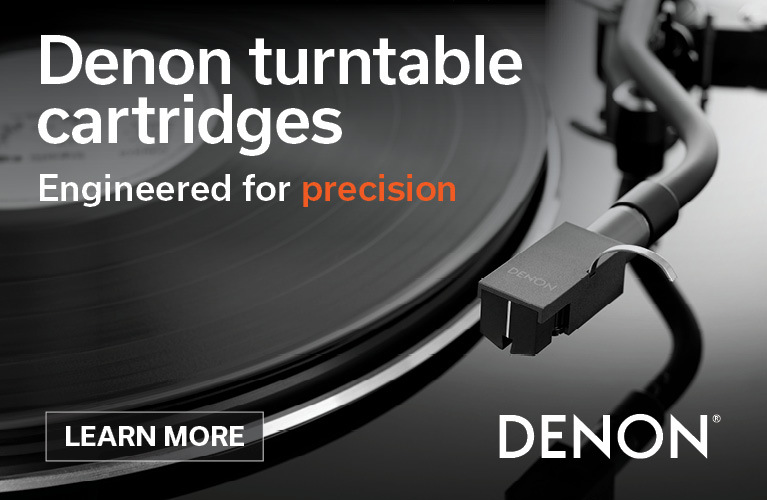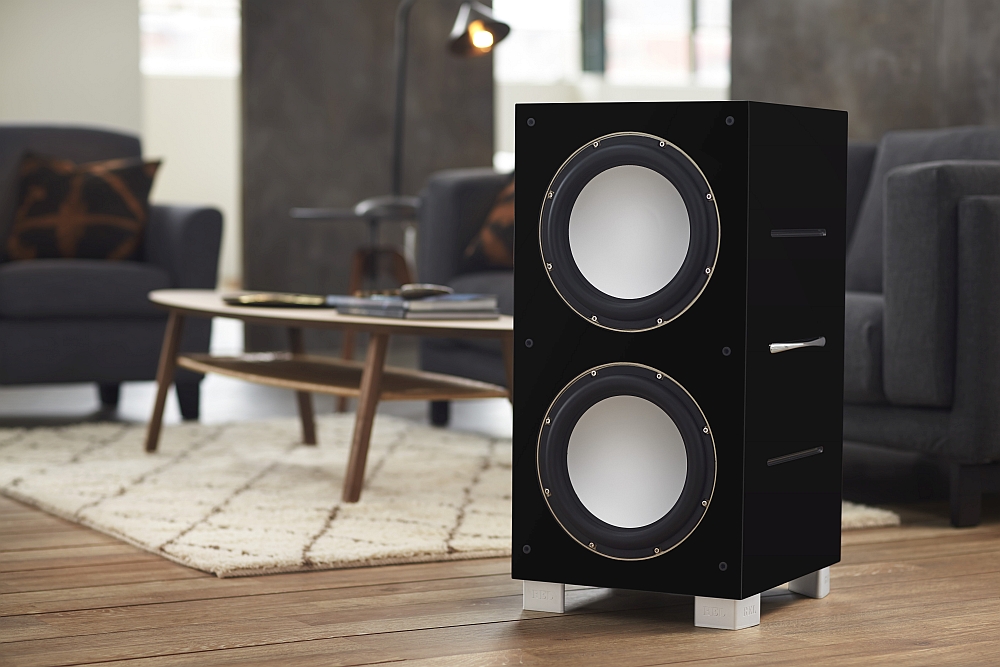Listening to music is an experience for the emotions. It’s a practice that needs to engage, to connect and to seize the listener allowing him or her to share in the visions of its creators. At its most beautiful and captivating, it can be an escape… a transport into the realms of the imagination. But for the facsimile to approach the ‘live’ event, the reproducing apparatus needs to reflect music’s full potential in terms of frequency span, even if, its true dynamic power is as yet unobtainable. So, in order to convey the full emotional – and even physical – spectrum of music, you’ll need the practical means by which to experience ‘full range’ reproduction. And that, is only accurately available via a very large floorstanding, high power loudspeaker or a true subwoofer. Enter the REL Acoustics 212/SE…
REaL Bass
The UK’s REL Acoustics has specialised in making thoroughly engineered subwoofers for decades. The company’s early models featured large low frequency transducers in massive enclosures and were designed to provide the best possible bass for high-end stereo listening. This aim necessitated simpatico relationships between high quality drivers, the cabinetry – and its appropriately large dimensions – and a crossover design that critically examined the integration between subwoofer/s and main speakers. And indeed, REL Acoustics garnered high acclaim for engineering subwoofers that excelled at providing the lowest octaves with extraordinary accuracy and excellent integration. Over time, REL Acoustics’ engineers continued to develop products featuring a wider selection of concurrent lines with models aiming to converge the audiophile stereo and home cinema markets. The ideology continues to this day and encompasses a total of four lines culminating with the ultra-high-end Reference Series.
The subject of this review, the massive 212/SE subwoofer features the latest thinking from REL Acoustics (REL for short from now on). The 212/SE is the range-topper in the company’s Serie S line which is only surpassed by the Reference Series of which there are only two models. While the 212/SE is by no means a small subwoofer, its vertical form allows housing for multiple drivers – and that arrangement’s associated high output – while maintaining a relatively small footprint. Ergo, the 212/SE features a front-firing array of twin 300mm (12-inch) ‘Continuous CastAlloy Bass Engines’ (REL-speak for single-spun cone drivers) which have been designed with long excursion rubber roll surrounds, cast chassis, large magnet structures and high temperature voice coils. The twin drivers are aided via a 300mm ‘Continuous CastAlloy’ passive driver mounted on the real panel above the connectivity bay and a further downward-facing 300mm ‘Continuous CastAlloy’ passive driver. So effectively, here you have a tall-ish, high powered true subwoofer system with four 300mm drivers in a beautiful black gloss-finished enclosure that demands little in terms of floor space over and above your standard medium-sized sub (444mm in width by 507mm depth and 815mm high). Kudos to the engineers so far but with more clever stuff to come.
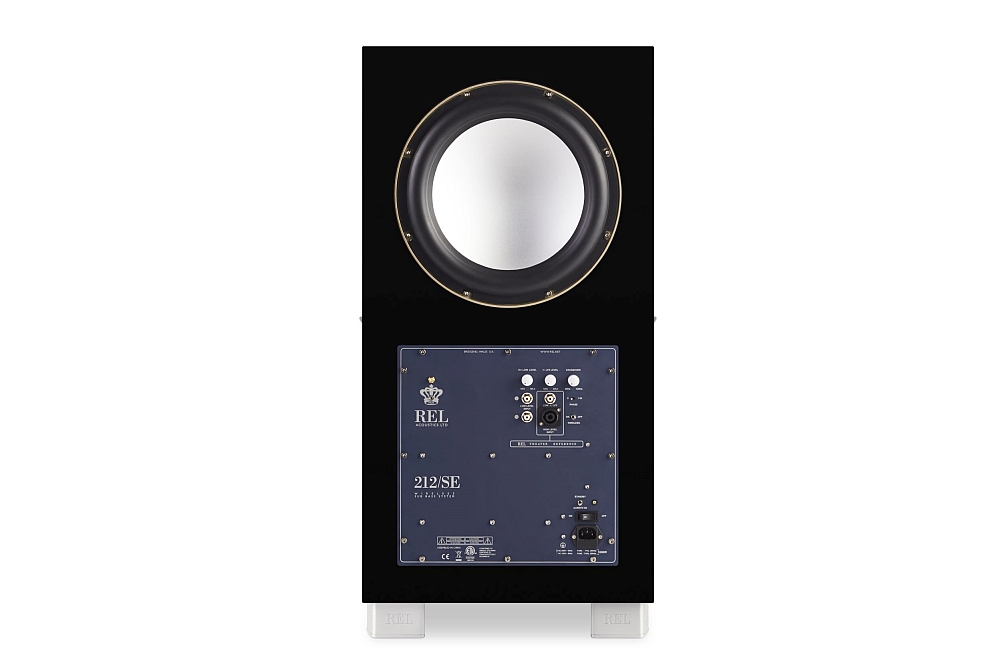
The 212/SE features an in-built 1000 watts (1700 watts peak) ‘NextGen3’ Class-D amplifier to drive the twin active 300mm drivers. The ample on-board power, combined with the driver group’s effective air-moving capabilities, provides a frequency response which is down 6dB at 19Hz. Input socketry is provided via a High Level Neutrik Speakon connector (Pro-level bayonet style), Low Level stereo RCA, LFE RCA and a mini-RF wireless antenna input for REL’s ‘LongBow’ wireless system box which is available as an optional extra (not provided for this review). The LongBow wireless transmission system comes in a separate box and features its own connectivity options. REL eschewed Bluetooth and Wi-Fi transmission, instead opting for its own “Zero Compression system with individual discrete D/A and A/D encoders”.
As far as controls go, the 212/SE has a ‘Always On’ and ‘Standby’ switch in addition, of course, to the mains on/off switch. Rotary knobs are provided for ‘Hi/Low Level’ and ‘.1/LFE’ volume control, crossover points for traditional connectivity constantly variable from 30Hz to 120Hz and toggle switches for phase (0 or 180 degrees) and the wireless LongBow system activation.
REL has very definite views on connectivity in an effort to provide as seamless an integration scheme, and as faithful a tonal balance, as possible. The company’s designs use a very simple and “fast” filter to block the subwoofer’s reproduction of high frequencies while, depending on the connection method, the 212/SE does not use a high-pass filter. You can run the sub in the traditional way by feeding it either single, twin line level or LFE signal but the company suggests you’ll achieve far better integration and tonal matching to your main speakers via its own connectivity scheme which has been designed into REL subwoofers for a number of generations now. My findings re integration and tonality would concur wholeheartedly.
So the preferred method of connecting a REL subwoofer is by using the high-level, unbalanced, dual-channel (stereo) signal feed via the Neutrik Speakon cable which is connected to your amplifier's left and right channel speaker terminals. With this scheme the main speakers run full range without the subwoofer determining their roll-off. You may think this may be a wide ‘double-up’ of the mid-bass but in effect, it works rather well. Australian distributor Synergy Audio’s Jack Sarkisian explains the various connectivity options succinctly:
Using the high-level input is always the best option. When connecting to the high-level input on the REL subwoofer from the amplifier, you capture the sonic signature of the main system, including the tonal balance and timing cues of the entire electronics chain. This is very important as characteristics of the bass signal from your main system are carried forward into the REL and this ensures far superior integration of the sub-bass with the main system, allowing the subwoofer to effectively "disappear".
The low-level connection is mainly used when there is no access to speaker output connections within the electronics chain, such as when connecting directly to a TV or active speakers. This configuration can also be used when connecting one REL subwoofer to monoblock amplifiers. However, when integrating a REL subwoofer with monoblock amplifiers, REL recommends using a stereo pair as left and right subwoofers and utilising the high-level connection of each subwoofer.
Throughout the review process I ran the 212/SE mainly as a critical listening subwoofer for stereo playback so I used the Speakon connecting method via my amplifier’s sturdy binding posts. As ‘advertised’, I found this method to provide superb integration and tonal matching while extending the mains to the lowest octaves. However, I also ran it for some time via the LFE input for home cinema purposes as I thought this would also be the way the subwoofer could be used in many contexts. Results there were equally impressive.
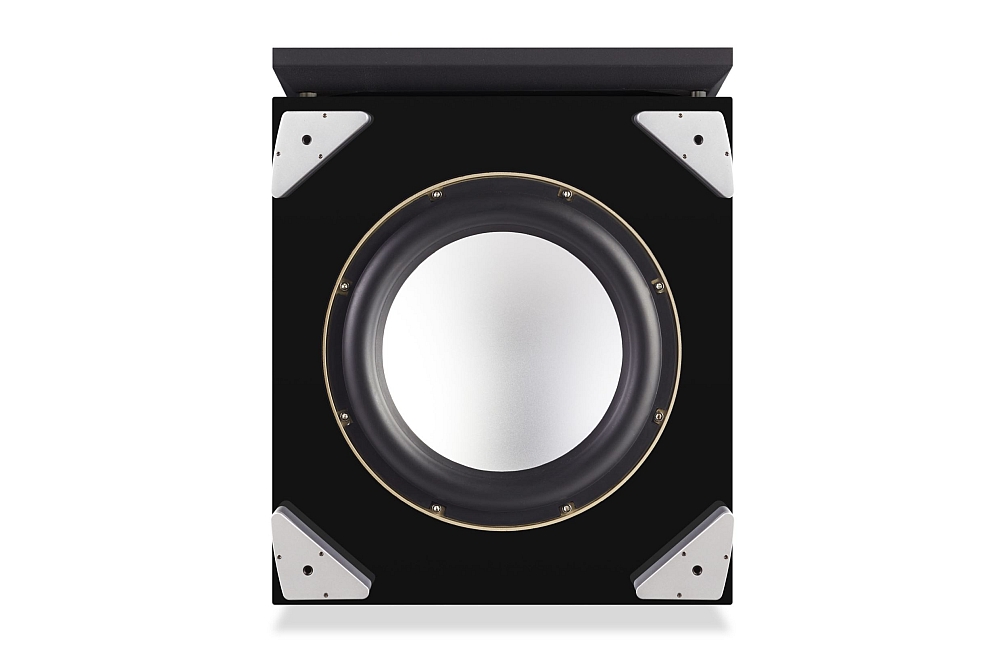
The 212/SE is gloriously finished in an 8-process multi-coat ‘Piano Black Lacquer’ gloss finish. Accents include chrome side handles (more cosmetic enhancement than serious lifting utensil), large solid aluminium feet (which serve as spacers for the bottom-mounted passive driver) and a top panel badge.
Finally, it must be noted that I was impressed with the company’s website which is very informative, contains a whole lot of articles I have no doubt consumers will find rather interesting and there’s all sorts of guides and ‘how-tos’.
There’s Bass… and there’s Bass
Synergy Audio’s Jack Sarkisian delivered the 212/SE and was instrumental in setting it up within the context of a combined stereo and home cinema setup which I run in an ancillary dedicated room. Here, I have a choice of three very high quality monitors I own while, during the 212/SE’s in-house tenure, I had further access to a pair of large high-end standmounts and mid-sized floorstanders.
Jack brought his own CD with a number of ripped test tracks which he uses specifically to ‘voice’ subwoofers. While playing a selected piece from the Sneakers soundtrack, featuring a massive low bass undertow, Jack incrementally inched the 212/SE away from the room’s corner until he felt the reproduction was just right. Not too much, which would be unbalanced and would boom, but not too little where the weight and musical gravitas of the piece would be compromised. He then micro-fine-tuned with a variety of other tracks and music genres. Once we were both happy with the results, he left me to my own play time. It was via the most unusual avenue that I discovered I was listening to a rather special low-frequency transducing system. That was before proper auditioning material was used and serious listening even began!
So, after Jack left I got on to desk-bound duties. In the evening, as I fired up the cinema system for movie watching a tad later, I casually stopped to watch a snippet of Seinfeld which happened to be on at the time. Then… Wow! Most of you would be familiar with the famous electric bass motifs used as scene intros throughout the episodes… Well, I was blown away. In those little riffs, I heard the tightest, most integrated, most faithful bass I’ve ever encountered in this system. And albeit audio was routed via good quality amplification, this was simple, standard broadcast TV sound!
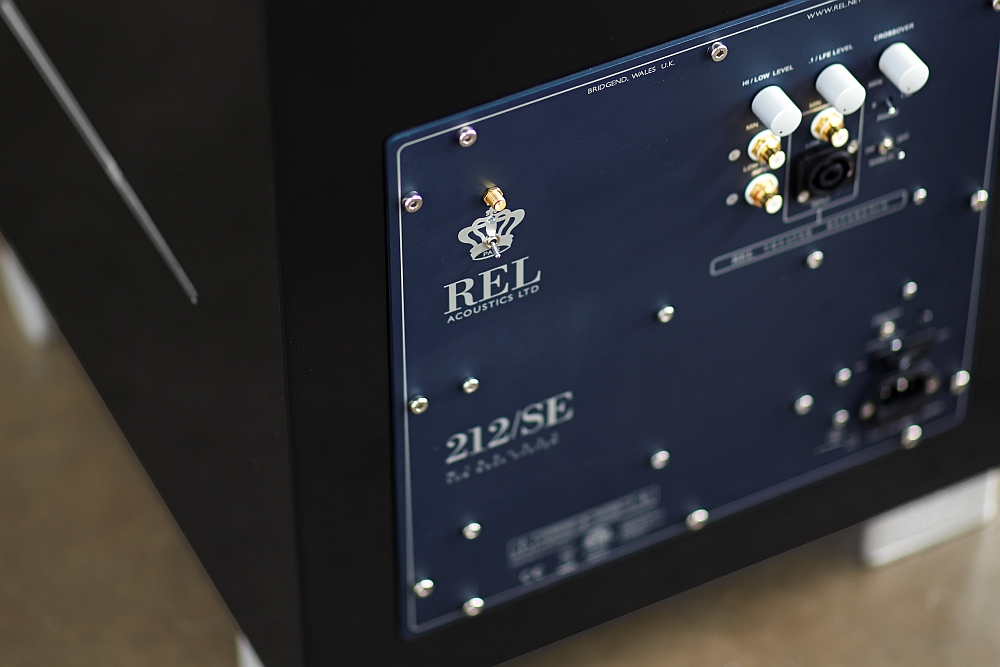
The following day, serious stereo auditions commenced. Yes, you could say I was somewhat motivated by what I heard the previous evening, even if it was a caricature of the serious auditions to follow. And the expectations were… well, thoroughly exceeded. One of my oft-used references for bass performance, from the mid-band right down to the lowest octaves, is Jackson Browne’s “Sergio Leone” from his Naked Ride Home CD. Three-quarters of the way through this superb composition, a speaker-taxing ultra-low rumble rolls through in spurts, for about a minute or so, before the song’s main theme recommences. I imagined the 212/SE laughing at the demands here, smirking “seriously, is this all you’ve got?” What I heard was a profoundly deep bass which was nuanced, detailed and without overhang or boom while seemingly stretching the low-end limitations of the format to its maximum capacity. This review was going to be fun…
Brain Bromberg’s Wood was whacked on the tray. There stood Bromberg, plucking energetically at his stand-up bass in “Come Together”, and me feeling every whack, massaged by the low bass which had no shortage of speed and tonal texture. The 212/SE’s accuracy, tied in with its frequency span, allows for superb image placement and soundstage reproduction. Given the high-end speakers I used were all capable of excellent imaging, the 212/SE just carried this accurate placement quality down to its own output. This made for an overall soundfield – from top to extremely low bottom – brimming with focused images perfectly placed within a massive, airy space with great lateral span and huge depth.
As extended as the 212/SE is – and that’s as low as anything you’ll ever need barring massive system contexts which are covered by REL in its Reference Series – I derived particular satisfaction from the kick drum which resides relatively high up in the low-end given the 19Hz extension of this subwoofer. Ride’s “Leave Them All Behind” the title track from their awesome EP (also featuring a hard-to-find 10-minute gem in “Grasshopper”, unavailable on the actual full-length album) has an extended synth-like effect at the track’s start which, very suddenly, explodes with powerful twin kick drum hits seemingly coming from nowhere. The sheer attack and thump of this was so powerful, so visceral via the 212/SE that I found myself re-starting the track several times… just for the infantile heck of it. Wow! But as solid as those whacks were, they were also sharp in terms of transient attack at the leading edge of the notes. There was drum skin and kick cloth in that smack-in-the-gut. And the meteor shower of guitars that follows is almost devastating – there’s force, and body, and pure… emotion.
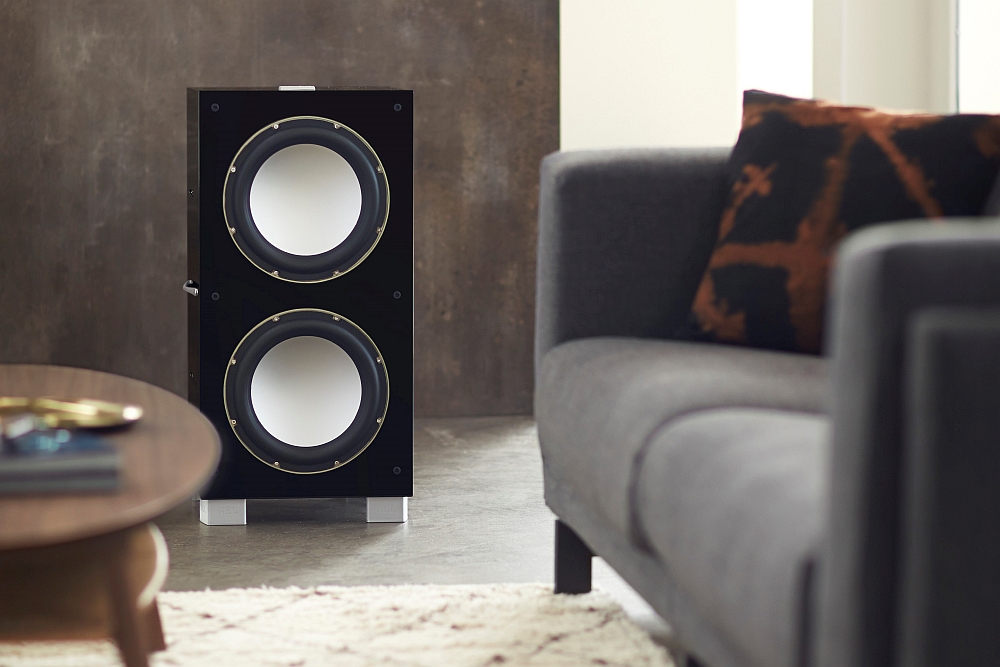
No matter the music genre or the contextual habitat, the 212/SE’s benefits were not just based on bass ‘awesomeness’ or low-end pyrotechnics. There was an overall contribution to musicality, a sense of increased rhythmic pace and general involvement with the music. And especially via REL’s recommended Speakon connection, the low frequencies not only blend in remarkably, but also sound in full balance with the mains. In other words, you don’t get a sense of exaggeration of the low-end just because the 212/SE ‘can’. Sure, it will totally rattle your home’s foundations (as I found out via the many powerful movie soundtracks on Bluray and Netflix movies I also auditioned) but under sensible levels (you have full governance of this via the unit’s level rotary control) you’ll get… Balance. And make no mistake – as beneficial as a component upgrade may be, the rewards derived from integrating the 212/SE into your high-end system’s context – a relatively easy task – will certainly far outstrip a more expensive cable, or a better CD player, or even an amplifier upgrade. And I’d wager that scenario would apply for any of the company’s extensive subwoofer offerings.
Conclusion
The benefits of running a subwoofer of this extraordinary quality – never mind power and capacity to go super deep – with high quality monitor standmounts (or even floorstanders for that matter) are, in my opinion, indisputable. Separating the cabinets allows more placement freedom for both mains and subwoofer/s where the former may no longer require boundary proximity reinforcement while the subwoofer/s could be placed where they cancel room nodes, etc. Those factors, combined with REL’s provisions for excellent integration potential make for a very strong case for this type of system configuration.
Given the 212/SE’s powerful set of attributes, I have to say that I was rather smitten… and will indeed miss this most superbly engineered and thought-out product. And yes, even when watching Seinfeld… “They’re REL and they’re spectacular!”
… Edgar Kramer
This email address is being protected from spambots. You need JavaScript enabled to view it.
Associated Equipment
- Speakers — Wilson Audio Alexia Series 2, Axis Loudspeakers VoiceBox S (nearfield monitor), Vermouth Audio Little Luccas Mk.II
- Amplifier — Gryphon Audio Antileon EVO
- Preamplifier — Supratek Cortese, Lightspeed Attenuator LDR passive
- Sources — Digital: Yamaha CD-S2100 used as transport, Totaldac d1-core DAC, MacBook with BitPerfect software, AIFF files. Analogue: Michell Engineering Orbe with Gert Pedersen Level 3 modifications and Origin Live Ultra upgraded motor, Trans-Fi Terminator air bearing linear-tracking arm, Shelter Harmony cartridge, Supratek Cortese & REDGUM Audio RGPH2 phono stages
- Processor — DEQX PreMate
- Cables — sILENzIO loom, Vermouth Audio Black Pearl Mk.II loom
- Audio Rack — SGR Audio Statement Model V
- Miscellaneous — Les Davis Audio Viscoelastic CLD discs
REL Acoustics 212/SE Active Subwoofer
Price: AU$6499
Warranty: Three Years Full Parts and Labour
Australian Distributor: Synergy Audio
+61 (0)3 9459 7474
www.synergyaudio.com
REL Acoustics, Ltd
North Road, Bridgend Industrial Estate
Bridgend CF313TP
United Kingdom
+44 (0) 1656 768777
www.rel.net

